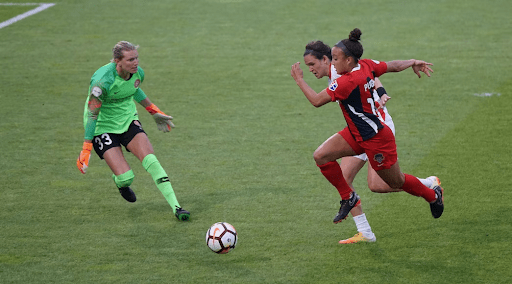
Soccer, the world’s most popular sport, has undergone significant changes with the introduction of Video Assistant Referee (VAR) technology. From major leagues to international tournaments like those covered by dafa sports, VAR has become a hot topic among players, coaches, and fans alike. This article explores how VAR has changed the game, affecting strategies, fan experiences, and raising new questions about the sport’s future.
What is VAR?
VAR is a system that uses video footage to help referees make more accurate decisions during a match. It can review goals, penalty decisions, direct red card incidents, and cases of mistaken identity.
Changes in Player Behavior and Tactics
VAR has led to noticeable changes in player behavior:
- More Careful Defending: Defenders are now more cautious in the penalty area.
- Delayed Celebrations: Players often wait for VAR confirmation before fully celebrating goals.
- Increased Pressure on Referees: Players and coaches are more likely to call for VAR reviews.
- Offside Awareness: Attackers are more conscious of their positioning.
These changes have influenced team tactics:
- High Defensive Lines: Some teams rely on VAR to catch opposing attackers offside.
- Set-Piece Strategies: Teams develop more intricate routines, knowing VAR allows for precise offside calls.
- Playing to the Whistle: There’s more emphasis on continuing play until the whistle.
Impact on Referee Decision-Making
VAR has altered how referees make decisions:
- Reduced Pressure: Referees can rely on video evidence for crucial decisions.
- Increased Accuracy: Studies show VAR has improved decision-making accuracy.
- Time Management: Referees must manage additional time for VAR reviews.
- New Skills: Officials have developed skills to work effectively with VAR technology.
Changes in Fan Experience
VAR has had a mixed reception among fans:
- Emotional Rollercoaster: Fans experience heightened tension during reviews.
- Improved Fairness: Many appreciate VAR’s role in ensuring fairer outcomes.
- Disrupted Flow: Some feel VAR interruptions harm the game’s natural excitement.
- Education: Fans have had to learn about VAR procedures and criteria.
- In-Stadium Experience: There’s often confusion during reviews due to limited information.
VAR’s Influence on Different Aspects of the Game
- Goals:
– More goals disallowed for previously missed offside infractions.
– Stricter enforcement of handball rules in goal-scoring situations.
- Penalties:
– Increase in penalty kicks awarded.
– Players are more careful in the penalty area.
- Red Cards:
– Serious foul play missed by the referee can now be punished.
– Potential for more consistent application of red card rules.
- Mistaken Identity:
– Cases of wrong player punishment largely eliminated.
The Ongoing Debate
Despite widespread adoption, VAR remains controversial:
Pros:
- Increased decision-making accuracy
- Reduction of clear errors
- Potential for fairer outcomes
Cons:
- Disruption to game flow
- Inconsistent application across competitions
- Subjective nature of some decisions, even with video evidence
Non-Standard Questions and Problems
Several less-explored issues have emerged with VAR:
- Psychological Impact on Players:
– How does constant scrutiny affect players’ mental health and performance anxiety?
– Are younger players more adaptable to VAR than veterans?
- Economic Implications:
– How has VAR affected betting markets and sports gambling?
– Are there disparities between wealthy and poorer clubs in VAR implementation?
- Tactical Evolution:
– Could VAR lead to new playing styles designed to exploit its use?
– How might teams use VAR data to inform recruitment strategies?
- Cultural Differences:
– Are there cultural variations in VAR perception and implementation globally?
– How do language barriers affect VAR communication in international matches?
- Long-term Player Development:
– Will youth academies change defender and attacker training due to VAR?
– Could VAR influence the physical attributes valued in future players?
- Referee Career Paths:
– How has VAR changed career trajectories for aspiring referees?
– Is there a risk of creating two tiers of officials – on-field and VAR specialists?
- Technological Ethics:
– What are the privacy implications of extensive camera coverage?
– How can we ensure VAR systems’ security against hacking or manipulation?
- Fan Engagement:
– Could VAR reviews become a form of entertainment, like challenges in tennis?
– How might augmented reality enhance fans’ understanding of VAR decisions?
VAR’s Evolution and Future
VAR continues to evolve:
- Faster Reviews: Efforts to speed up the review process are ongoing.
- Improved Communication: Leagues are working on better ways to explain VAR decisions.
- Standardization: Calls for more consistent application across competitions.
- Potential Expansions: Discussions about expanding VAR to other aspects of the game.
- AI Integration: Potential for artificial intelligence to assist in decision-making.
- Holographic Replays: Future technology might allow 3D replays in stadiums.
Adapting to the VAR Era
All stakeholders are adapting to VAR:
- Players and Coaches:
- Developing VAR-aware tactics
- Managing emotions during reviews
- Incorporating VAR scenarios into training
- Referees:
- Undergoing additional training
- Balancing on-field decisions with video review
- Developing new communication skills
- Fans:
- Becoming more educated about game laws
- Adjusting expectations around match pace
- Engaging with new forms of VAR-inclusive match analysis
- Broadcasters:
- Finding ways to fill time during reviews
- Providing additional angles and analysis
- Creating new graphics to explain VAR decisions
- Governing Bodies:
- Refining VAR protocols based on feedback
- Balancing technology use with traditional aspects
- Addressing ethical and fairness concerns
Conclusion
VAR has undeniably changed modern soccer, bringing both solutions and new challenges. It has increased decision-making accuracy but at the cost of some spontaneity and flow. As the sport grapples with VAR’s wide-ranging impacts – from player psychology to economic implications and cultural variations – finding the right balance between technological assistance and the game’s essence remains crucial.
The future of soccer in the VAR era is likely to see further innovations, potentially including AI integration and enhanced fan experiences through augmented reality. As technology evolves, so too will strategies, training methods, and even the rules of the game itself.
Ultimately, VAR represents more than just a technological addition to soccer; it’s a catalyst for a broader conversation about sport in the modern age. The ongoing challenge will be to harness VAR’s benefits while preserving the passion, spontaneity, and human element that make soccer the world’s most beloved sport. As we move forward, the beautiful game will continue to adapt, balancing tradition with innovation in this new technological era.




